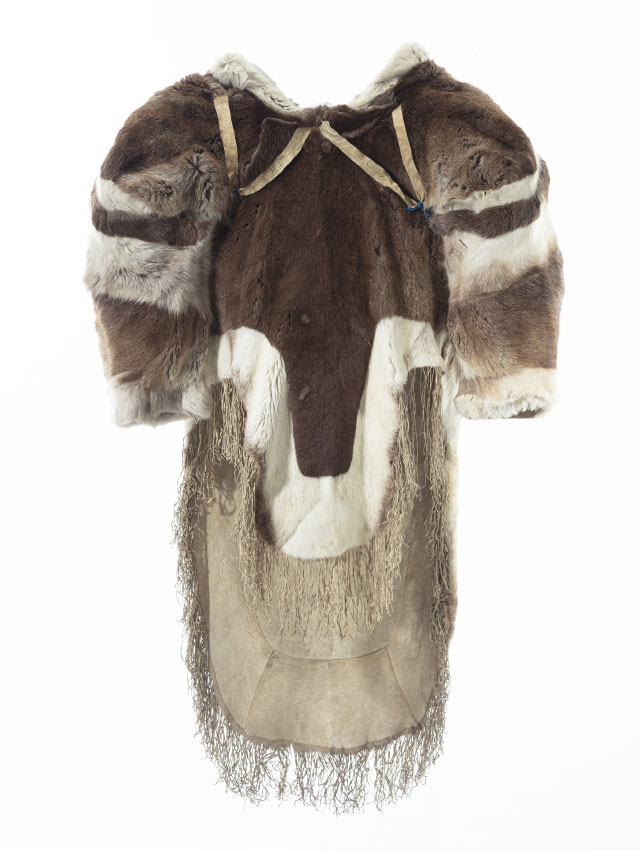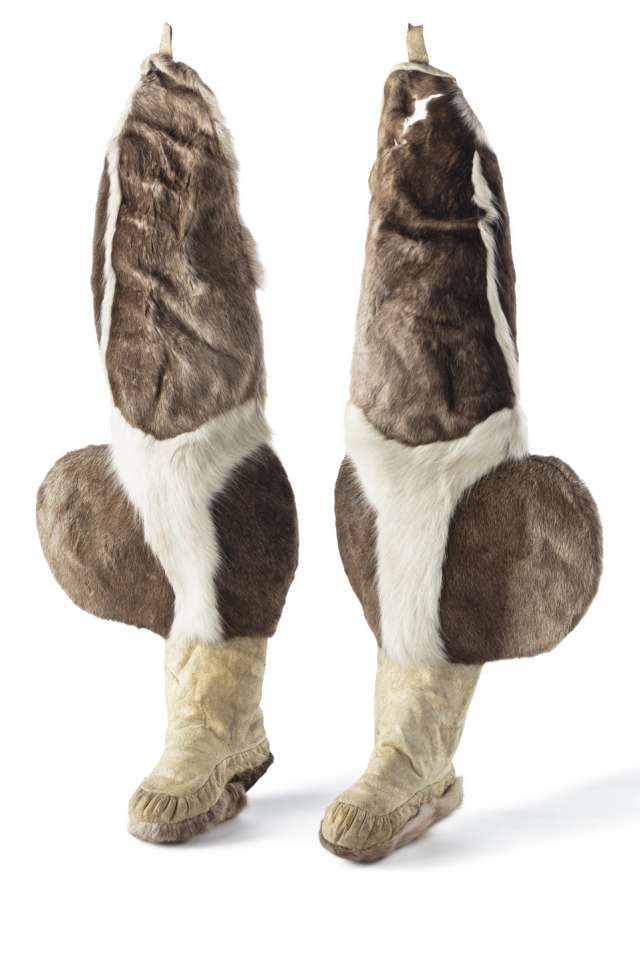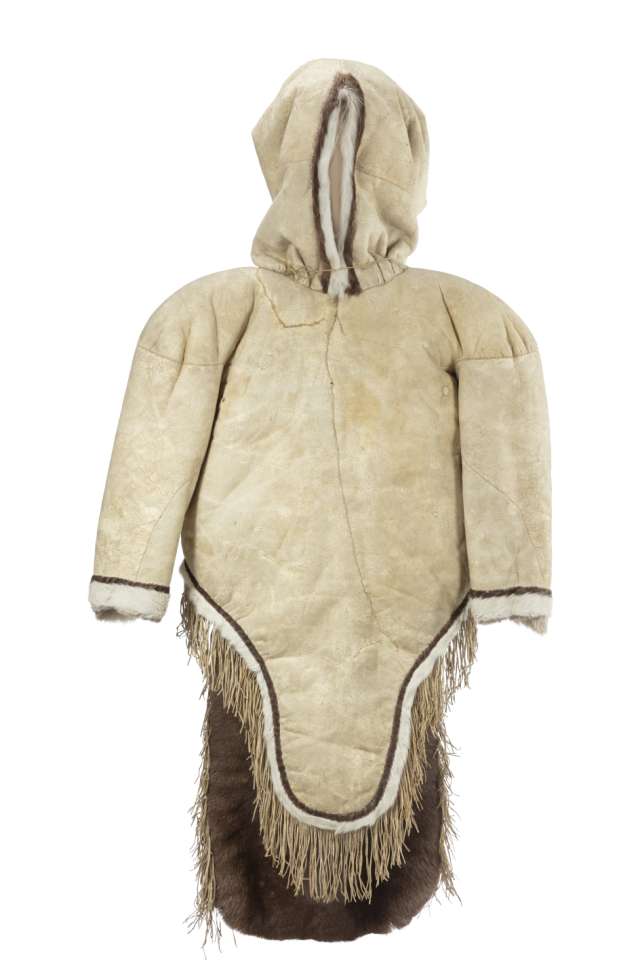Mother's coat or amauti (qulittaq aanngaarnisaq or qulittaq tui)
An amauti is a parka for mothers. This one has an ample hood and a large back pouch for a baby. Underneath this outer parka (qulittaq), women would wear an atigi — a parka that was similarly styled but had the leather on the outside and the fur against the skin, thus keeping both mother and child warm.
This model of amauti, named aanngaarnisaq or tui, is specific to Igloolik. Its broad shoulders (tui) allow the mother to move her child from her back pouch to her front for breastfeeding without exposing the child. It is also distinguished by the light and dark fur strips on the shoulders.
This female coat has a waistband (qaqsungauti) that goes around the woman's body and is attached in front to V-shaped straps. The waistband can be adjusted to allow more and more room in the back pouch for the growing child.
Nowadays, this style of amauti is still worn but now made of cloth or synthetic fabrics.




